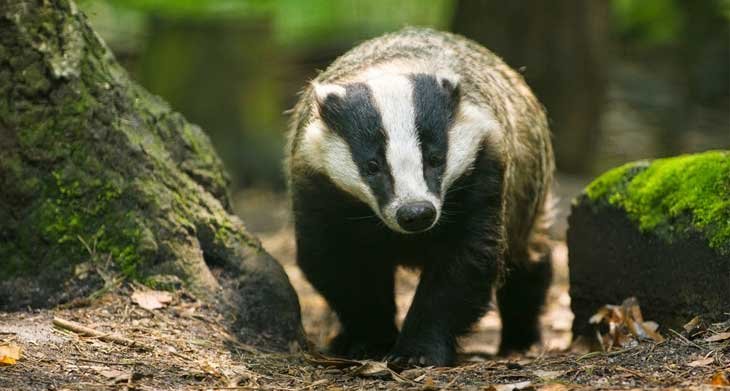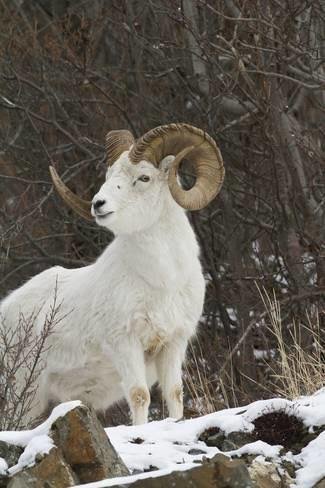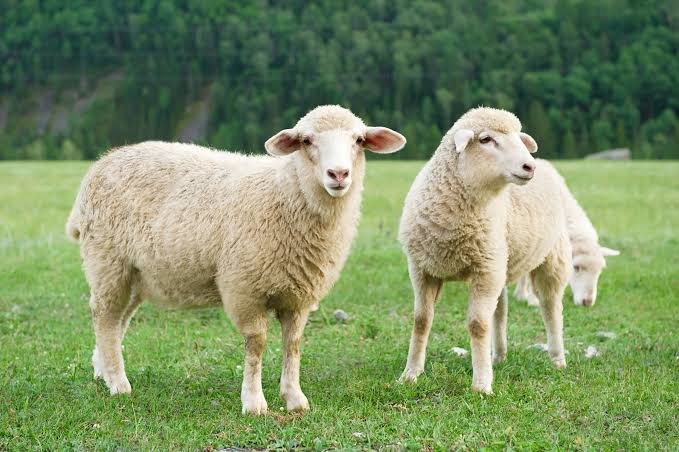-
Posts
117 -
Joined
-
Last visited
Content Type
Profiles
Forums
Events
Everything posted by giugirl
-
The baahgers (wild mountain sheep + badger), they are medium prey entities, that has common occurrence in cold climate biomes as mountain and taiga biomes, but they also appear in grassland, swamp and woodland biomes, their spawn rate is 35 to 65% depending on the biome and the islands where they can be found are “grass mingle”, “azure hills”,“whale island”, “summer mountains”, “long winter”, “icy forest”, “sleepy reeds”, “frost lands”, “deep frozen peak” and “deadly hills”; their appearance is like they have a visible big ram horns in a different shape, sheep ears, their head, is between a badger and a sheep one and their snout is mostly sheep like with those dark colored tiny whisker marking like freckles in laterals in the snout area, a medium badger like body covered with a extra coat of fur which is a sheep like one (wool) that also covers the the top of their heads, has a sheep tail covered in a fluffy wool, their paws and hindlegs are mostly badger like with visible dark colored medium sized thick claws which are a mix of mostly a badger’s claws with some features of a sheep’s hooves, orange colored eyes and their fur color is a grey and white with black pattern markings reassembling a badger; they are attracted mostly by berries, thick grass and mushrooms and sometimes in certain moments they may turn their attention to berry bushes without berries to collect (causing to destroy them) and roots; their stats are: 2 strength, speed 2, 1 cold resistance, 2 sight and 3 hearing; they can live lonely or in flocks which can be 2 to 6 members (in rare occasions 7); they move 2 tiles per day like bearyenas; they have 4 variants and all of them share the same behavior but with little differences: the regular which are very common, buddy baahger (tamable until becomes adult with the regular variant), defensive buddy baahger (has a little rare incidence is also tamable until becomes adult with the defensive variant) and defensive (has uncommon incidence). To kill them is needed 2 points of strength, the strategy may varies depending on the baahger’s untamed variants “regular” and “defensive” but no matter which variant this entity is they will always provide 6 of food; regular baahgers are very common and they can be either lonely or in a flock and they will move away from predators (including nichelings) and they don’t have a age bar, in order to hunt them is necessary to do a surprise attack strategy, or do the poison killing strategy and use 2 or more creatures of choice to perform the surrounding strategy to catch them depending if they are lonely or from a flock, but if they are from a flock you need to separate the one who is closest to your creature(s) from the others; defensive baahgers are uncommon and don’t have a visible age bar like regular baahgers, the difference of their appearance is like the regular variant ones but few centimeters taller compared to their regular and both buddy counterparts; and they also live either lonely or in a flock but depending on the the size of the flock they spawn in a number of 1 to 3 while the rest are regular variant ones and behave like it’s regular counterparts, they not only move away from threats (like their regular counterparts) as well as their name says they resist the first hit and will stay on the tile where they had been hit, turn their direction to face the one who hit it and attack it back unless provoked; in order to take them down the strategy has 2 parts the first part can be either one of the 3 strategies depending on the situation and for the second and final part is similar when hunting crabbits but the difference that the creature who is facing it can’t attack the them in the direction where they are facing because it will cause to them attack the nicheling. Buddy baahgers also know as “friendly baahgers” are the tamable counterparts of it’s species, no matter what variant they are they will always be few centimeters shorter compared to it’s both regular and defensive variants and has a age bar visible, and depending on the the variant which had been tamed they can be normal (buddy baahger) or have protective behavior included (defensive buddy baahger); if a buddy/friendly variant of this entity has a sibling (the chance of a this tamable variant born with a sibling is 45%) and if one of the lambs are tamed their sibling will also be tamed/join the tribe; the friendly baahgers will help your creatures gather food and nest materials (this includes for them allowing your creatures to shed it’s wool also to contribute to provide nests materials, and it grows back every 2 to 3 days in the game depending on the biome (in cold climate biomes cannot be shed)), can’t be controlled by the player and their defensive variants will aid/assist your creatures by fighting predators and rouge males while the normal variants will help detect the presence of natural nests, however both types of this entity variant have the same genes. the genes of the buddy baahger are: - immunity: I / B - fertility: low fertility / infertile - blood clotting: normal blood clotting - pattern size: random - pattern density: random - pattern shape: D - pattern type: mask - pattern color: black - horn color: random / Black - eye color: orange - fur color: black / white - albinism: no albinism - melanism: no melanism - tail: medium tail - hindlimbs: BAAHGER HINDLEGS - paws: BAAHGER PAWS - body shape: wooly body - snout: BAAHGER SNOUT - eyes: normal eyes / near sight - horns: BAAHGER RAM HORNS - ears: sensitive ears here's the stats for the baahger's hybrid genes: - baahger hind limbs: 1 speed, 2 strenght and 1 swimming - baahger paws: 1 speed, 2 collecting and 2 digging - baahger snout: 1 cold resistance, 2 smelling, 1 collecting and 1 digging - baahger ram horns: 2 strenght and 1 cracking If there something wrong or need to improve tell me then i will correct and adjust to make it balanced and acceptable 🙂.
-
Anyone can help me describe not only the islands as well give me ideas for the genes from this biome which are the normal/regular, hybrid and ancient genes. And the only regular gene that i could think is my version of the wooly body gene. check it out for information:
-
And anyone also has suggestions to help me with ideas for the genes in this biome? Like regular, hybrid and ancient genes?
-
Here’s my 2 current biome ideas for more information: And the woodland biome idea (credit to the user NyssaDerp for the idea) :
-
Updates: since I got 2 biome ideas which are taiga and mesa and loved the woodland biome idea; wolfoxes will also have a chance of common spawn in taiga and woodland (depending on the island) and rare incidence in mesa biome islands (also depending on the island). And i also made some adjustments on their chance of spawning in the islands where they are present. i hope to this helps; if you guys see something wrong, tell me that I will do the corrections to make it more acceptable and balanced.
-
I got some ideas for how 2 of my ideas for the taiga biome islands would be, however i need help to describe their fauna and flora and the same goes with my other islands with this biome; so the “snowflake taiga” has this name because the island it’s self has the shape that reassembles a snowflake while the “moonlight lagoon” has this name because the lagoon has the shape of a crescent moon.
-
I updated the name for the killer island, now I need some help to describe the islands including their fauna and flora; because I already got some ideas for how the sunlight lake island would be like: it would be a partially a equivalent of the oasis island, but the difference that the lake as it’s name says has the shape of a sun and normal berry bushes are a little common but the spicy and dried berry bushes are even more.
-
I got a bit similar idea of yours about the wooly body gene but with some differences take a look:
-
Looks a bit cute to me after all, but i already drawn some concepts of how this gene would look like (i need to make sure that the creatures with this gene don’t look like nichelings in a mix between sheep and poodle breed dogs clothing too much) do you have any ideas when i decide to draw the next concepts of this gene? Specially how the winter coat form and summer coat form would look like (both male and female) so I can draw the concepts (but they will appear in my art style in a certain way)? 🙂
-
Here’s the page for the geckoleon:
-
geckoleons (gecko + chameleon) are passive prey entities that live in hot climate biomes such as savannah and mesa (check the link of my mesa biome idea for information); they spawn in the hollow of a fallen piece of dead trees which is partially covered by sand and rocks which they use as a "burrow"/hiding place and they sometimes can camuflage (turning 90% invisible/transparent) themselves when predadors (including nichelings) are close by as well escape to their hiding place like rabils and stagmoles and move away from them; they are attracted by berry bushes and swarms of insects and collects them unless they are being chased off truring their turn; like rabbils, they also can't go to the water; their appearance is like they are small green colored entities with a gecko’s head, body and hind legs along with chamaleon's front legs, tail and eyes; their stats are 1 for heat resistance, 1 for collecting, 1 for insect collecting and 1 for speed; to kill them is necessary to have 2 of strength, when killed they will provide 4 food points and the creatures can also walk in the top of them so their strategy is similar when hunting rabbils but if you want to make sure that the creature of choice are standing or nearby a geckoleon is necessary to use the smelling or hearing mode to make them visible from their camuflaged state. here's the mesa biome link:
-
As you see in the updated description of this gene is a “regular” one that can be obtained by wanderers or by my upcoming herbivore entity that can give new hybrid genes idea in one of my 2 biome ideas (taiga) despite that there’s also ice blocks in there (so my taiga biome is like a bit a mix between grassland, mountain and woodland biomes with few features based of the tundra). check out the woodland biome idea from this user is cool and I love it:
-
Guys, I did the corrections I hope to this be ok. 🙂 tell me if there’s something more to be done so I will correct/improve it. ^.^
-

runner’s hindlegs (remake of a original idea) (UPDATED)
giugirl replied to giugirl's post in Feature Requests
I made the corrections I hope to this be ok. 🙂 -
Alright, I’m going to make some corrections on this gene because i want make sure to it to be present in my one of my 2 biome ideas which is the taiga one check it out: As well on my upcoming herbivore entity idea that can generate hybrids (new hybrid genes) which lives on the taiga, the mountain and rarely on grassland biomes: the “baahger” (wild mountain sheep + badger).
-
Thanks and the creature can use it’s shedded coat as nest materials also, based on some animals that use their own fur as a option to build nests.
-

runner’s hindlegs (remake of a original idea) (UPDATED)
giugirl replied to giugirl's post in Feature Requests
Ok it will be 4 biomes then -

runner’s hindlegs (remake of a original idea) (UPDATED)
giugirl replied to giugirl's post in Feature Requests
I know but what really matters is the survival of the creature tribe -

runner’s hindlegs (remake of a original idea) (UPDATED)
giugirl replied to giugirl's post in Feature Requests
Ok but how about walking in 20 tiles in 3 different biomes with exemption of water? Just to make it a little fair. -

runner’s hindlegs (remake of a original idea) (UPDATED)
giugirl replied to giugirl's post in Feature Requests
Any idea to make it more balanced? -
Stats: 3+ cold resistance, 1+Heat radiance and 1+ Seeding (allows to the extra wooly like extra coat of fur automatically fell out from the creature’s body when in hot climate biomes and in normal/regular climate biomes the option to shed it (by clicking on the creature), so in both options it can provide nest materials (of course the wool and it’s materials points are 5 to 10) but the extra coat of fur will only grow back in a certain period of time (every 2 or 3 days) if the creature are in a normal/regular climate biomes and will instantly grow back if the creature comes to cold climate biomes (it cannot be shedded while in cold climate biomes); when the nicheling with this gene losses the extra wooly coat of fur it’s stats will temporary change until it grow back again like the cold resistance is replaced by heat resistance, and gains the 1+ stats of scentless and the heat radiance stat is replaced by the speed stat (because i’m trying to follow the criteria of genes from the game wiki and try to make it balanced); showing that this body has the “winter coat state/form” (3+ cold resistance, 1+heat radiance and 1+ seeding) and the “summer coat state/form” (3+ heat resistance, 1+ speed, +1 scentless and the seeding ability is temporary disabled on this state until the winter coat grows back depending on the biome)). To unlock this gene is necessary to invite creatures with this gene to your tribe (this creatures can be wanderers or my herbivore entity idea “the baahger” (wild mountain sheep + badger) that lives in the “taiga” biome (one of my 2 biome ideas along with the mesa one)). (you guys can draw concepts of this gene to help me with this idea if you guys want ) ((Corrections notes: made some changes to this gene in order to make it more acceptable, more balanced and at same time trying to follow the criteria of the body’s genes according to the game’s wiki; i hope to this makes it more balanced and acceptable, if there’s something else that needs to change and improve tell me)).
-
Stats: speed +3 and swimming +1; to unlock this gene is needed to move on 20 tiles in 4 different biomes no matter what island you are. ((correction notes: changed the unlock conditions of this gene (it was originally to move on 100 tiles no matter what island you are) in order to make it more balanced and acceptable; if is there something that needs to be improved on this gene tell me so I can correct it)).
-
But this one doesn’t have stinkiness; and the difference would be that the tip is a bit longer and forms a espiral like form in the end, like the way that squirrel tail’s are pictured in some animations; and i think you misunderstood it a little bit because i wanted to say that i made this tail have this kind of feature because the already present gene “big ears” have as stats: +4 of hearing and -cold resistance; so why not a tail with +4 of cold resistance and -1 for heat resistance.
-
Yes I meant that this is a birth defect, and this can slow the nicheling down in some turns if they born with this
-
Oh right, I only wanted to also give more tail ideas and help balance a bit more because of the already present gene “big ears”; take a look at the wiki page about genes to see the reason for why I decided that my tail idea will have this kind of feature: https://niche.fandom.com/wiki/Genes





